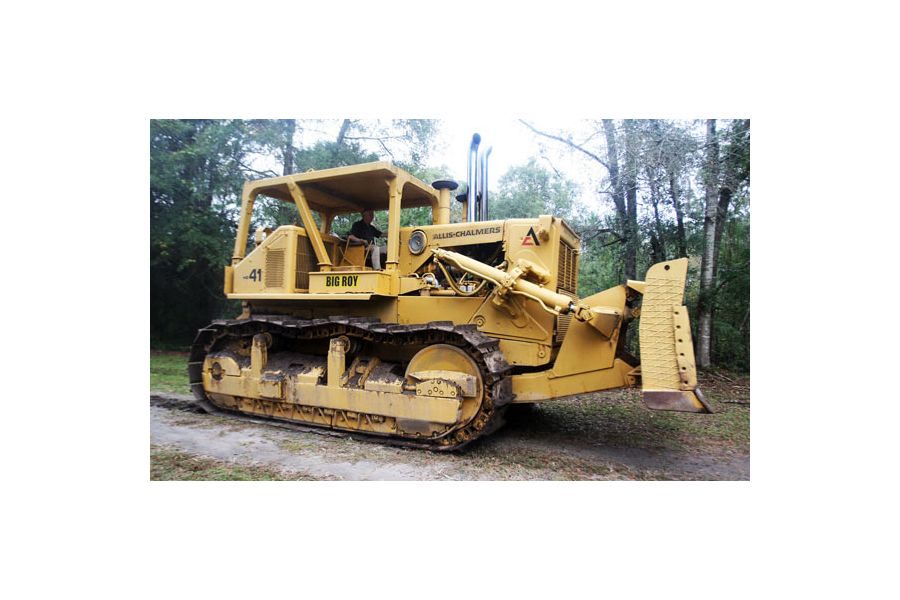Green Acres

Image caption:1972 Allis-Chalmers HD-41
Curious spectators this fall craned to see an orange-yellow toned vehicle, generating 524 horsepower from its turbocharged V-12 engine and matched to a six-gear transmission, carried on a trailer truck to its new home. Rescued by an enthusiast, the 45-year-old model spent its formative years in the Southeast and Ohio and was almost sold as scrap before winding up as an exhibit of an antique group near Charleston, S.C.
Buffs might instantly guess the mobile to be a modified Corvette or Cadillac, at least until they learn the machine rolls on tracks, weighs 65 tons and reaches maximum speeds of 7.4 mpg. The model moved earth at a nuclear plant and cleared space for an interstate highway.
One of a handful thought to remain, the rare 1972 Allis-Chalmers HD-41 was one of the largest bulldozers built at the time – only huge graders from Caterpillar kept pace. Allis-Chalmers manufactured the behemoth off-roaders, which stood 10 feet high and stretch 20 feet in length, for less than 10 years before returning to smaller agricultural equipment. In 1974, worldwide auto and heavy equipment maker Fiat formed a joint venture to buy the construction equipment business, which became Fiat-Allis.
The restored HD-41 represents an extreme example of an under-the-radar collectibles field, the reclamation of decades-old tractors crafted by household names such as Ford and John Deere and by big and small farm equipment makers now and in the past such as Massey-Ferguson, International, Oliver, Minneapolis-Moline, McCormick, Case and Farmall.
Statistics are hard to come by as to the scope of farm equipment preservation efforts in the U.S. But guides list antique tractors and related machines for sale with adjacent photos, and websites such as Fastline posts more than 70 tractors, bulldozers, graders and bucket trucks for sale dating to 1920 and priced up to $36,900. Farm Collector, which prints a magazine, highlights articles on its website about tractor and engine history and restorations as well as oddities such as how to identify wagon manufacturers and how threshing machines work.
One story looked at the tractor conversion boom of the 1920s when companies offered kits on how to change cars into tractors.
"Judging by the amount of information available on the Staude Mak-a-Tractor conversion, the Staude was perhaps the best-known of the dozen or so conversions manufactured in the years around 1920," author Bill Vossler wrote.
Produced by E.G. Staude Mfg. Co., in St. Paul, Minnesota, owner E.G. Staude in a 1917 farm magazine claimed the company had 20,000 orders, with the capacity for 30,000 more. "The power plant, any automobile, is in the farmer's yard, and his daughter or his son under draft age can operate the machine," the writer quoted Staude as saying.
Copyright © CTW Features